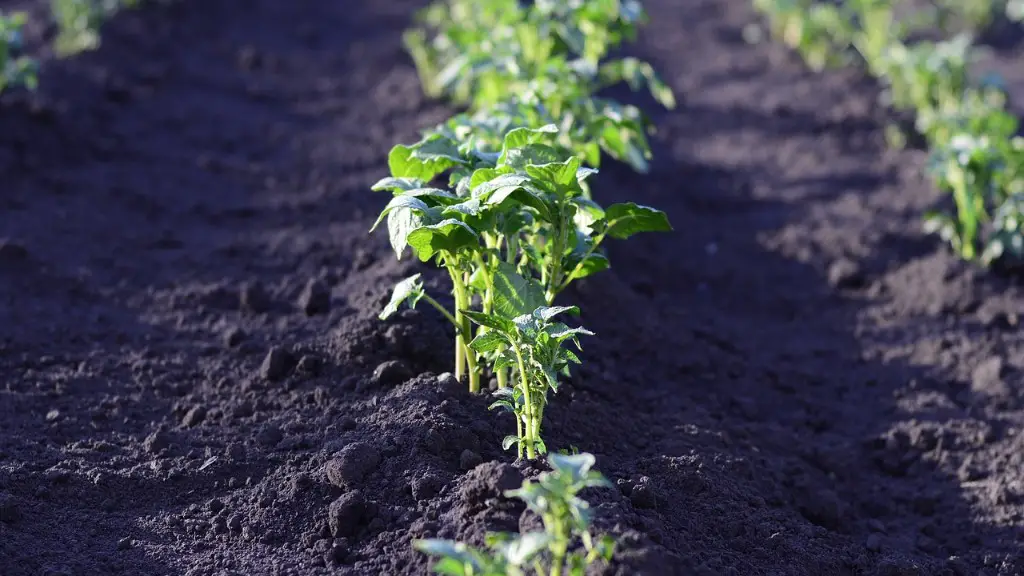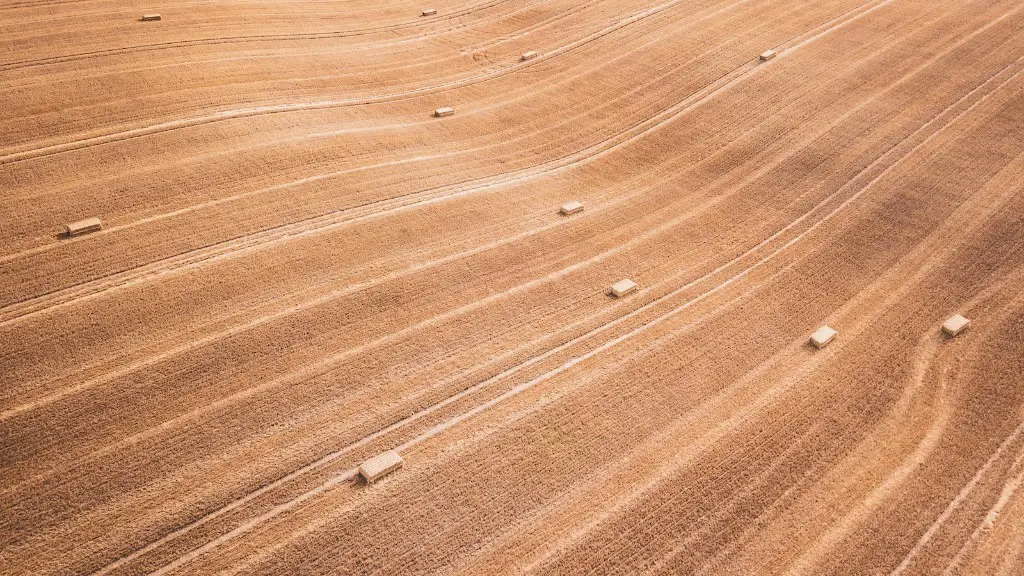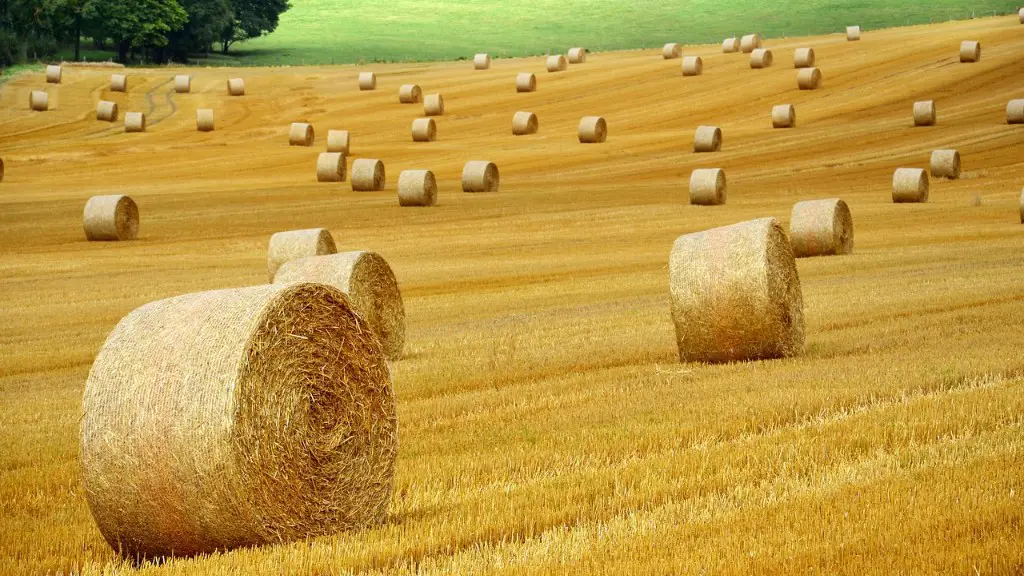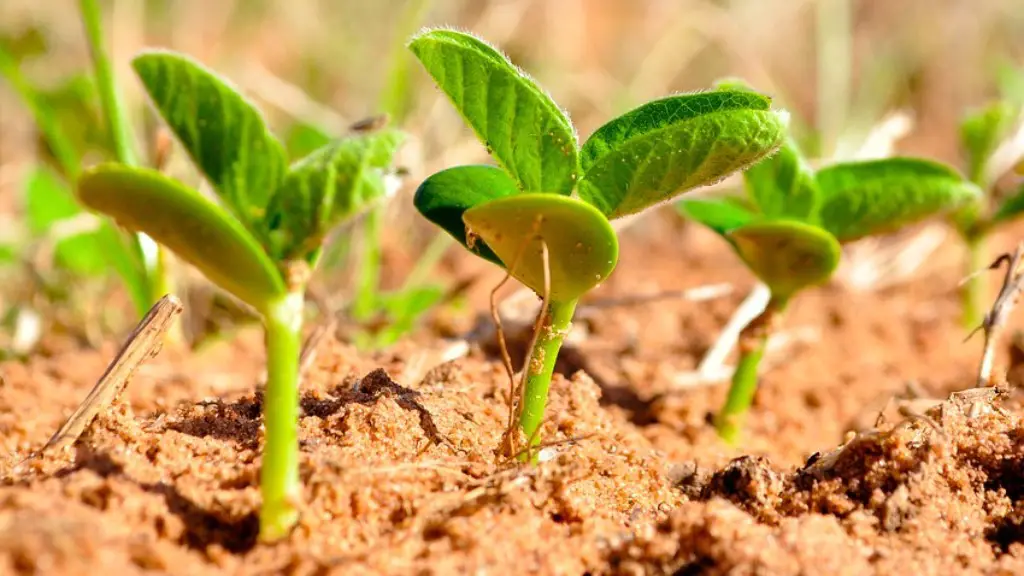Agricultural husbandry, or crop husbandry, is the scientifically based system of managing the soil, crops, and livestock of an agricultural farm. The goal of crop husbandry is to provide the farmer with food and healthy products in an efficient and sustainable manner. The practice of crop husbandry includes a wide range of practices, from soil management and soil fertility to planting, harvesting and marketing of a farm’s products. It also includes animal husbandry and animal health management. In order to achieve this, the farmer must understand the complexities of crop rotation, weeds, and diseases.
Crop husbandry involves an interrelated cycle of management and prevention that uses knowledge and experience to identify risks, assess and monitor crops, plan for disease and weed control, and manage the crops for maximum profits. This cycle of management includes pest and weed control, the use of fertilizers, and the management of plant growth. In order to ensure that the farming cycle is successful, the farmer must be aware of the different pests and diseases, as well as their control strategies, before they begin the growing process.
Crop husbandry also involves proper management of the land, soil and plants. This includes assessing and managing the fertility of the soil, selecting crop varieties, planting, and irrigating the land. The farmer must understand how soil fertility and plant growth work together and how to best manage their land and crops to maximize profits. A range of techniques and technologies are used to accomplish this, such as crop rotation, cover crops, and the use of fertilizer.
In agricultural husbandry, the farmer must understand and use effective pest, weed, and disease control strategies. These control strategies are aimed at preventing and managing pests and weeds, as well as preventing and controlling diseases that can affect the crop. These strategies must be carefully monitored to determine their effectiveness and to ensure that the farm does not suffer from over- or under-application of the treatments.
In crop husbandry, nutrient management is also important. Nutrient management involves the management of both the soil and the plants in order to ensure that they receive the necessary amounts of essential nutrients. Nutrient management includes soil testing, soil fertility management, and the selection and application of fertilizers that meet the needs of the crops. Proper nutrient management is important to ensure the viability of the crop.
The success of crop husbandry depends on the farmer’s ability to develop and maintain a successful crop rotation and soil fertility management plan. Crop rotation is a form of agronomy that involves the careful selection of crops that are rotated in order to benefit the soil and increase crop yields. Soil fertility management involves identifying the health of the soil and its nutrient levels, and managing the soil in order to maximize its fertility and productivity. In order to achieve this, the farmer must understand the complexities of soil fertility and its management.
Crop husbandry is an important part of agricultural production and involves a range of different processes and techniques. It is essential that farmers understand the complexities of the process and use their knowledge and experience to make decisions that both maximize the profitability of their farm and protect the environment. By using these practices, farmers can ensure that they are able to produce a good crop and increase their chances of success.
Land Management Use In Crop Husbandry
Land management is an essential process for crop husbandry, as it ensures that soils are healthy and productive for agriculture. Land management involves assessing and managing a range of factors that affect the fertility of the land, such as soil type, topography, drainage, and nutrient levels. In order to manage land effectively, farmers must understand the root causes of fertility and the processes involved in managing soil fertility. This includes learning about different soil types, their properties, and the crops that are best suited to each type of soil.
In crop husbandry, land management also involves proper management of the land, in order to ensure that it is in good condition and capable of producing quality crops. This involves assessing and managing the land, including identifying potential hazards, evaluating soil health and fertility, and applying fertilizer and other nutrient amendments as needed. Proper land management is essential to ensure that the land is in good condition and will produce quality and safe crops.
When managing land, farmers must also consider the impact that their actions have on the environment. This includes minimizing the use of pesticides and other chemicals and ensuring that the land is properly managed for healthy soil and a safe environment. Proper land management is essential for ensuring that the environment is protected from the harmful impacts of agricultural activities, such as water pollution and soil erosion.
Additionally, land management is essential for the sustainability of the farm. Sustainability involves managing the land and its resources in order to ensure that future generations are able to benefit from these resources. By ensuring that the land and its fertility are maintained, farmers are able to guarantee that the land will continue to produce a good crop in the future. Sustainable land management is essential for the success of farms and the habitats that they support.
Crop husbandry requires land management practices that are both sustainable and efficient. This includes the careful selection of crops, proper soil and nutrient management, and the use of fertilizer and other nutrient amendments as needed. By understanding and implementing these land management practices, farmers are able to ensure that the land is in the best possible condition and will provide a safe and healthy environment in which to grow quality crops.
Weed And Pest Control In Crop Husbandry
Weeds and pests can have a significant impact on crop production, as they have the potential to reduce yield and quality of the crop. In order to prevent or reduce the damage caused by these pests, farmers must use effective weed and pest control methods. This includes the use of insecticides, herbicides, and crop rotation. The use of these methods can help to minimize the impacts of weeds and pests, allowing farmers to maintain healthy crops and maximize their profits.
In crop husbandry, weed control is essential for maintaining soil health and fertility. Weeds can be controlled through the use of herbicides, which can either prevent weeds from becoming established or can reduce the infestation of existing weeds. Herbicides are often used in combination with other weed control methods, such as crop rotation, to ensure that the weeds are managed effectively. Crop rotation is an effective way to control weeds, as it encourages the rotation of crop types, which prevents weed seeds from becoming established in the soil.
In order to manage weeds and pests, farmers must also understand their lifecycles and needs. This includes identifying the types of weeds and pests that are present, their biology and behavior, and their control methods. By understanding this information, farmers can then make informed decisions about how best to manage the weeds and pests in order to minimize their impact on the crop.
In crop husbandry, pest control is essential for protecting crops from pests that can have a significant impact on yield and quality. Insecticides can be used for this purpose, and their use must be carefully monitored in order to ensure that their effectiveness does not decrease over time. Additionally, farmers must also monitor and inspect their crops regularly in order to identify and control any pests that may be present.
Weed and pest control methods must be used with care and consideration, as they can have a range of impacts on the environment, humans, animals, and plants. The use of chemical pesticides must be minimized and carefully monitored to ensure that they are not causing unintended consequences to the environment and human health. Additionally, farmers must develop an effective strategy for managing and controlling weeds and pests on their farm.
Fertilization In Crop Husbandry
Fertilization is an essential part of crop husbandry, as it enables the farmer to supply essential nutrients to the soil in order to ensure that crops are able to grow and produce healthy and quality yields. Fertilizers come in a range of different forms, including organic and synthetic fertilizers, and each has its advantages and disadvantages. The type of fertilizer used depends on the soil type and the type of crop being grown.
In crop husbandry, fertilization can be used to supplement existing soil nutrients, to replenish nutrients lost through crop rotation, or to increase the productivity of a particular crop. Fertilizers can be applied in many different ways, such as through soil application, through foliar spraying, or through the use of irrigation. The type of fertilizer used will depend on the crop and the soil type, and the amount used must be carefully monitored in order to ensure that it is effective and does not cause any unintended consequences.
It is important that farmers understand the different types of fertilizer available, their effects on soil and crops, and the methods of application. By understanding these factors, farmers can select the most appropriate fertilizer for their farm and ensure that it is applied in the most effective manner. Additionally, farmers must also be aware of the environmental impacts of fertilization, especially when it comes to runoff and leaching of nutrients into water sources.
In addition to selecting the appropriate fertilizer, farmers must also understand the importance of proper timing and application methods. The timing of fertilizer application is an important consideration, as it can affect the effectiveness of the fertilizer. Additionally, the method of application must also be taken into consideration, as this can affect the spread of the fertilizer in the soil and its availability to plants.
The use of fertilizer is an essential part of crop husbandry, as it is essential for supplying the necessary nutrient levels in the soil. The selection of the right fertilizer, applied in the right amounts and at the right time, will ensure that crops can access the essential nutrients needed for their growth and development. Additionally, proper timing and application methods will help to minimize the environmental impacts of fertilization.
Pest and Disease Control In Crop Husbandry
Pests and diseases can have a significant impact on crop production, as they have the potential to reduce crop yield and quality. Therefore, it is essential that farmers understand and use effective pest and disease control strategies to protect their crops from damage. Different types of pest and disease control methods can be used, such as biological control, chemical control, and cultural control.
Biological control involves the use of natural predators and pathogens that can help to reduce the population of pests and diseases. These can be beneficial organisms, such as predatory insects and beneficial bacteria, that can help to control pest and disease populations. Biological control can be effective when used in conjunction with other pest and disease control methods.
chemical control methods involve the use of insecticides, herbicides, and other chemicals to control pests and diseases. These products are effective at controlling pests and diseases, but they can also have a range of unintended consequences. Therefore, their use must be carefully monitored and limited to ensure that their impacts on the environment and human health are minimized.
Cultural control involves the use of cultural methods to reduce the populations of pests and diseases. This includes crop rotation, cover crops, and crop practices such as planting disease-resistant crops and allowing fallow periods. Cultural control can be effective at reducing pest and disease populations, as well as preserving soil health and fertility.
In crop husbandry, the use of pest and disease control strategies is essential for protecting crops and maximizing yield and quality. Farmers must understand the different types of pest and disease control methods, and how they can be used in combination with each other, in order to ensure that their crops are adequately protected. Additionally, farmers must also monitor the effectiveness of these strategies in order to ensure that they are working.





